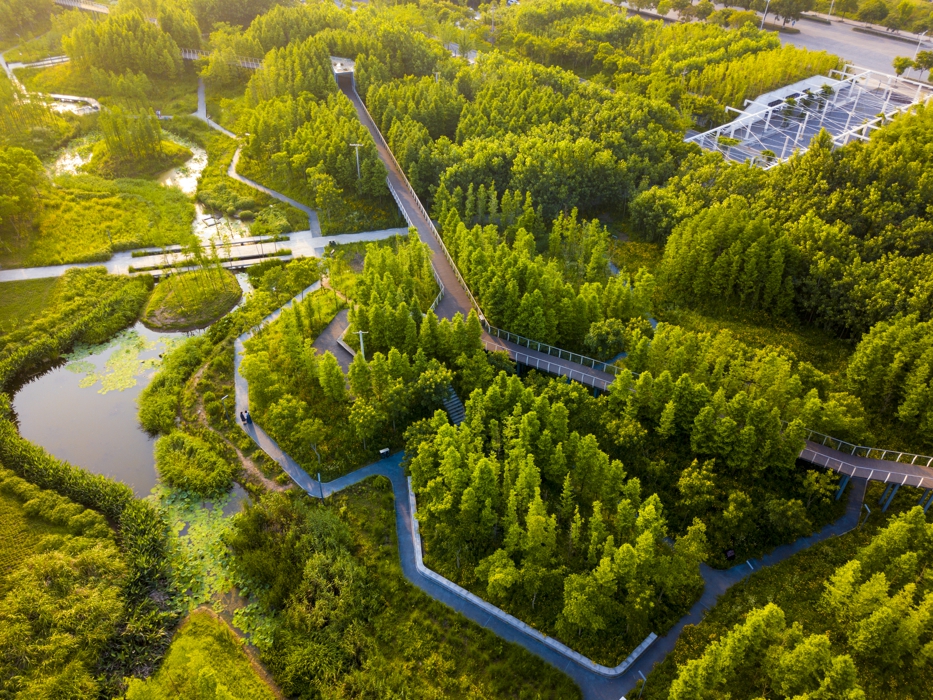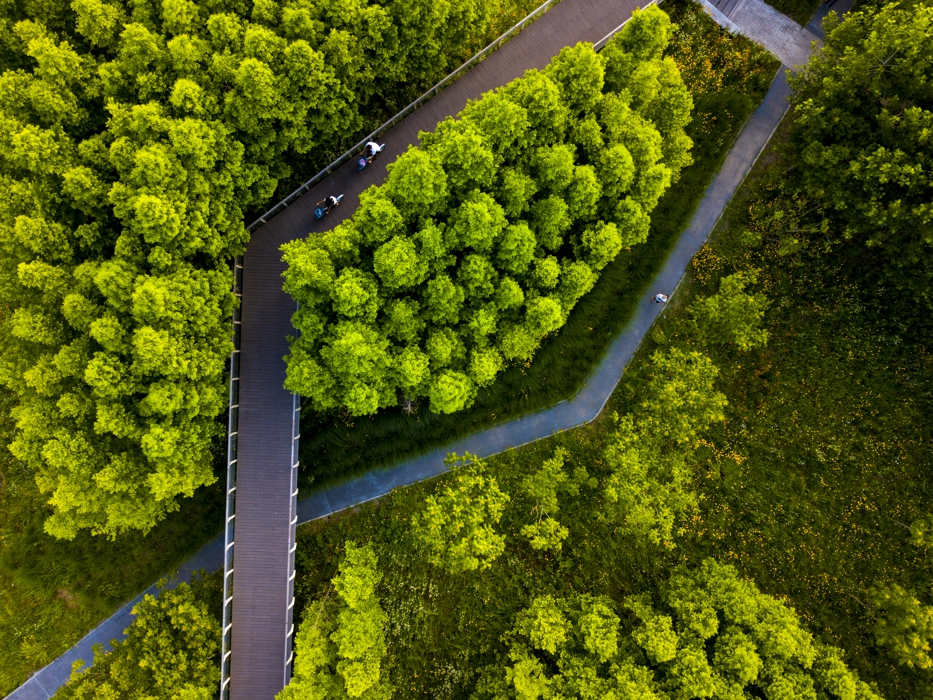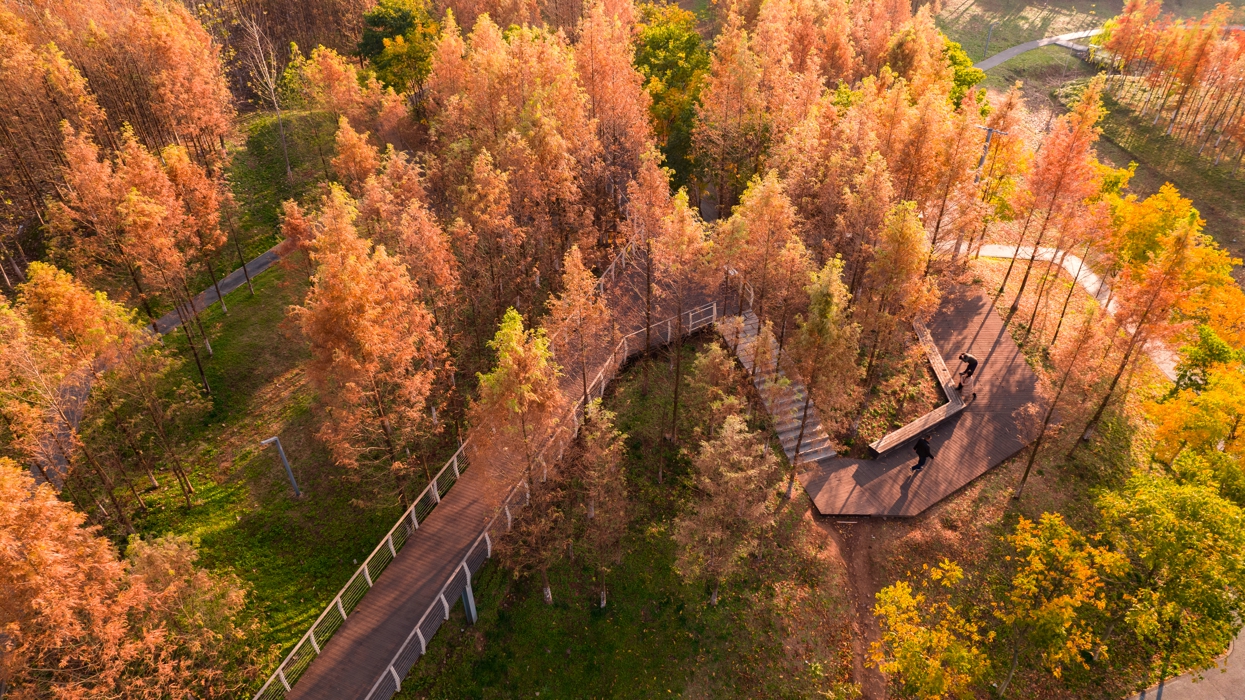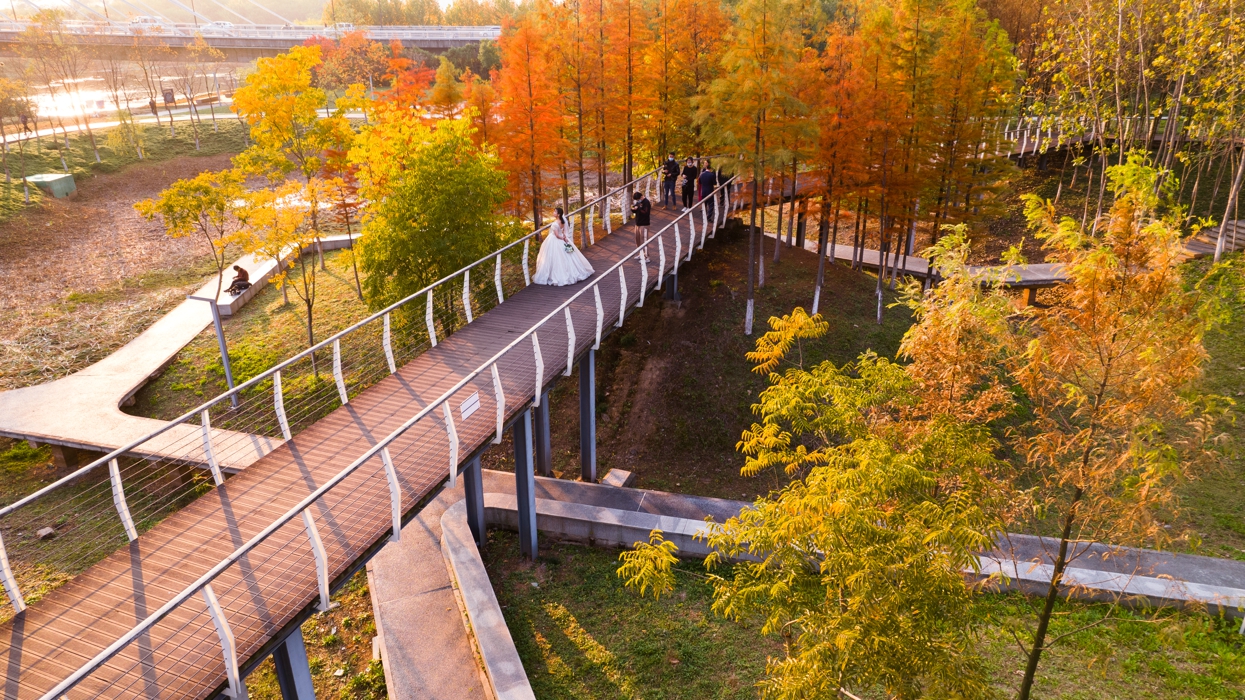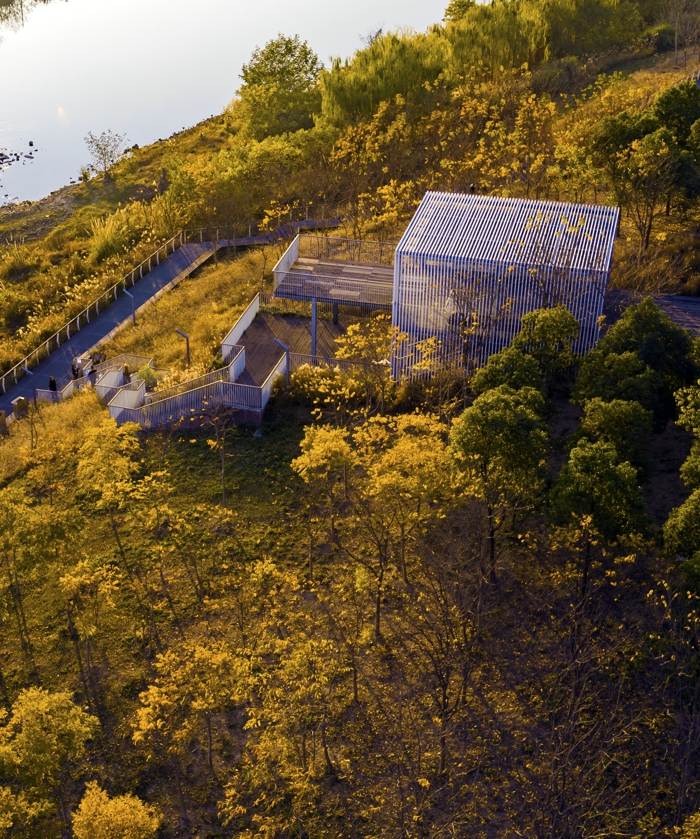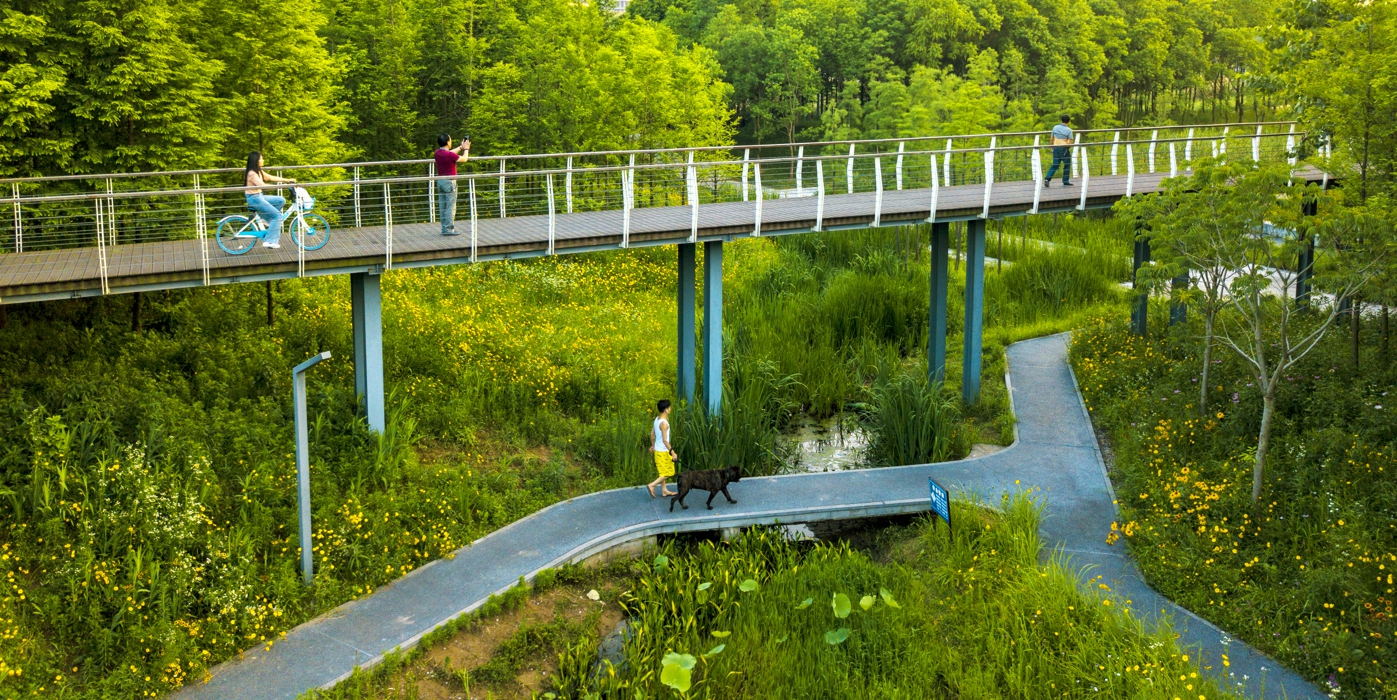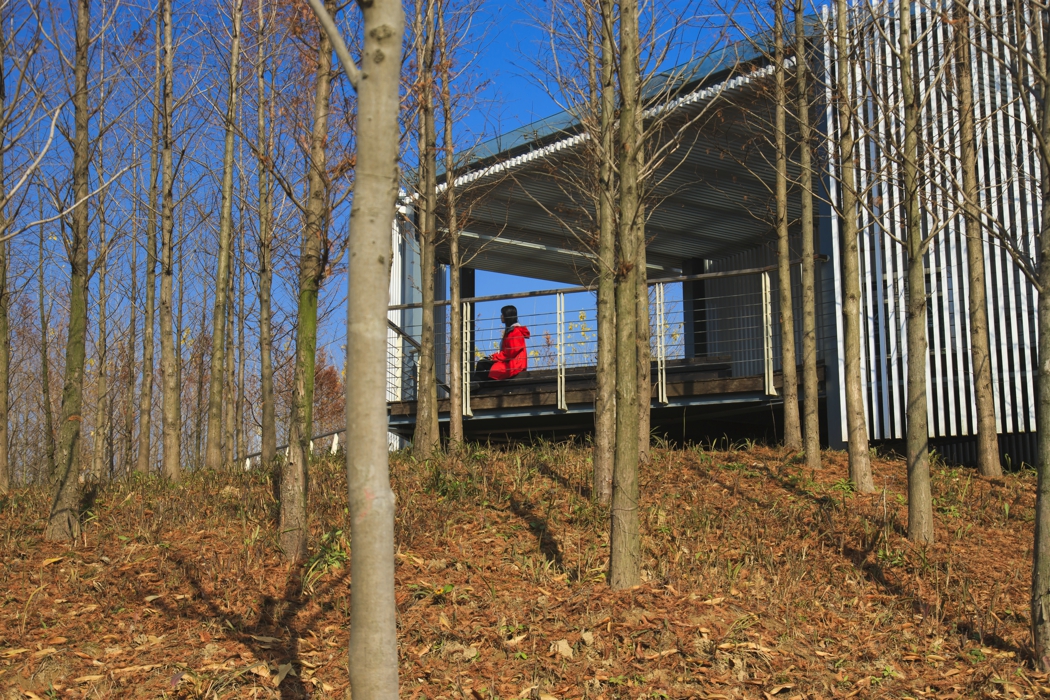Yiwu Binjiang Park Skywalk
Project Information
- Project Location:
- China Jinhua, Zhejiang
- Project Scale:
- 945m
- Design Time:
- July 2009
- Build Time:
- May 2017
Project Profile
This project, located in Yiwu City, Zhejiang Province, was conceived as a response to urban challenges such as flooding, water pollution, solid waste, and construction debris. Inspired by traditional local agricultural wisdom, the design vision for Yiwu Binjiang Park was to create a low-maintenance, cost-efficient urban park capable of stormwater regulation, water purification, support for native biodiversity, and productive use of space—while also offering rich recreational and exploratory experiences for the public.
Earth excavated from the internal valley space was repurposed to build natural levees. Construction debris found on-site was reused to form tree islands planted with dawn redwoods. The wooden boardwalk winds through forested and wetland areas, offering visitors a unique immersive experience amid wild grasses, wetlands, and groves—right in the heart of the city. Elevated pedestrian bridges connect the tree islands, guiding people across rain gardens while allowing panoramic views of the ever-expanding urban skyline. Tent-like structures on the islands create focal points and resting areas. This double-layered pathway system dramatically increases the site’s capacity while enriching the overall landscape experience.
The completed park has become a vital part of daily life for local residents. Early in the morning, people stroll along the wooden boardwalk and pedestrian bridges; on summer nights, families with children gather at wetland pools purified by natural systems; even at midday in summer, visitors relax in the shade cast by pavilions on the tree islands. Elderly residents enjoy the shaded squares and terraces, gazing toward the younger generation exploring the wild valley meadows along the boardwalks. The park’s ecological design has transformed a previously neglected site into a high-quality, low-maintenance piece of urban ecological infrastructure. It now provides a wide range of ecosystem services for the city—including flood regulation, river restoration, native habitat regeneration, food production, and opportunities for recreation and aesthetic enjoyment.
